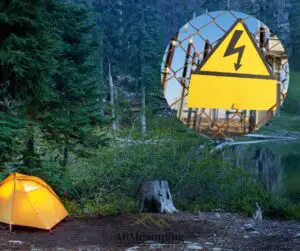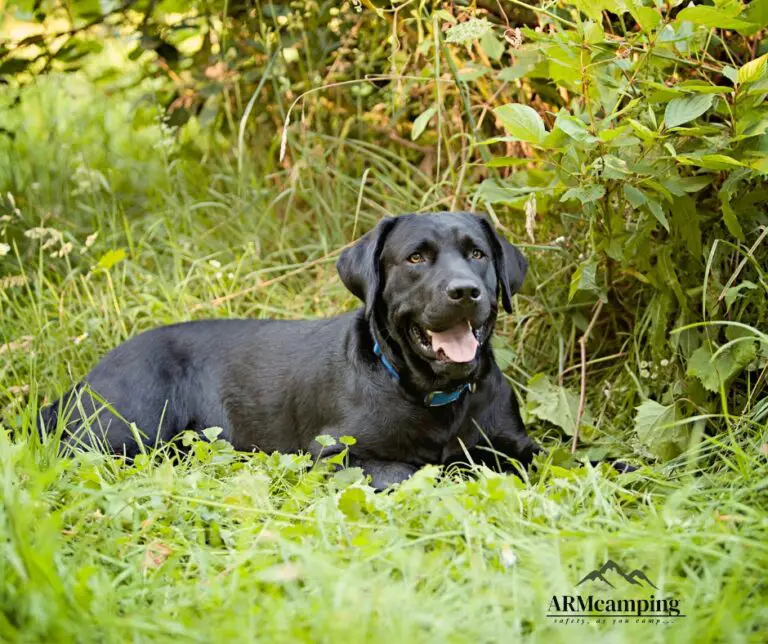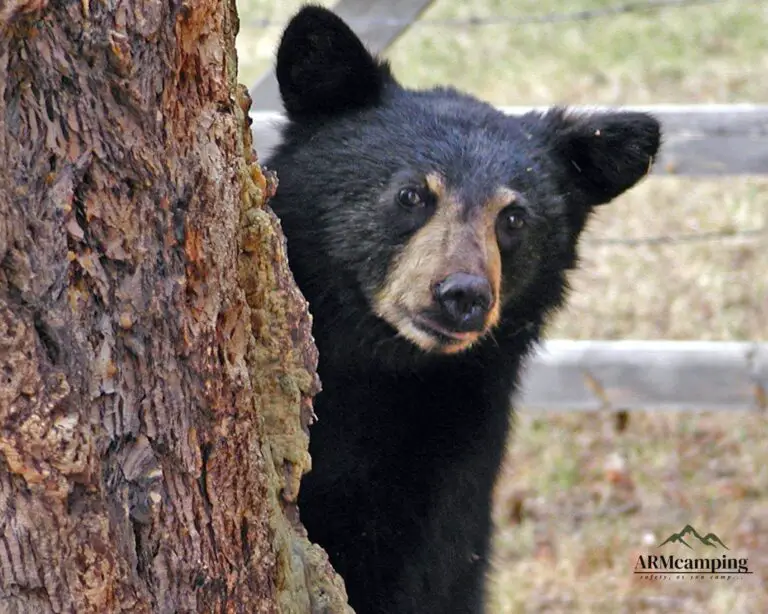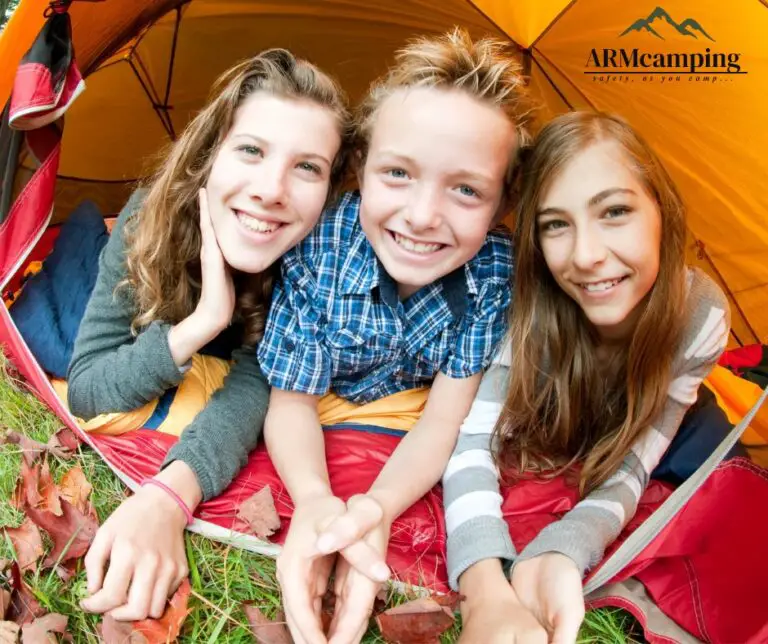
10 Most Likely Hazards While Camping
Table of Contents
While it’s a lot of fun to go camping with loved ones, it can also be potentially dangerous. With the help of this guide, you’ll learn what the most commonly known potential hazards are while camping and how to avoid them.
Although we live in one of the most developed countries in the world, more and more people are becoming attracted to outdoor recreation. The idea is simple: many of us live very stressful lives and want to get away from it all by spending a few days in nature.
However, not all of us really know what we’re getting into when we head out into the wilderness. Camping may seem like some sort of child’s play where nothing might go wrong, but there is always the danger of a hazard lurking behind every bush.
Camping is a lot of fun, but it also comes with a lot of work. The biggest (and most obvious) hazards are the weather, which can quickly change. The second is the bugs.
They can be annoying and there are ways to protect yourself, but they still can be dangerous. The third category of hazards revolves around the equipment we bring and how we use it. Below is a shortlist of potential hazards you can encounter while camping.
Hazards You May Encounter While Participating in Camping Activities

The most likely hazards that you may encounter while participating in camping activities include being bitten or stung by insects, coming into contact with poisonous plants, being exposed to extreme weather conditions, and being injured while using camping equipment.
However, these hazards can be minimized by taking proper precautions, such as using insect repellent, wearing long sleeves and pants, avoiding known poisonous plants, and being careful when using camping equipment.
1) Mosquitoes and Insects
When camping, there are a few hazards while camping to be aware of. The most common hazard is being bitten by a mosquito. Mosquitoes are attracted to warm, humid environments, so be sure to camp in a location that is not swampy or near-standing water.
Other common hazards include getting lost in the woods and camping in an area with wildlife. To avoid getting lost, be sure to bring a map and compass, and to follow the Leave No Trace principles. When camping in an area with wildlife, be sure to store food properly and to keep a clean campsite.
2) Poisonous Plants
Camping is a trip that’s worth taking. It melts all the worries related to work and life at home. But just because you’re going to camp doesn’t mean you are free from poisonous plants. Even while camping, you need to be aware of poisonous plants.
One hazard that can be encountered while camping is poisonous plants. It is important to know about these plants and take precautions in case you come across them.
It is important to know how to recognize vicious plants so that you can avoid them while camping. Below are highlights of 4 of the most common unsafe plants that you will want to avoid while camping.
1. Berries
While camping, you might just want to know what are some poisonous berries. I mean, the campsite always looks greener on the other side of the campfire!
While it’s tempting to pick a beautiful berry from the bush and eat it, be careful. If you enjoy camping or spending time in the wilderness, then you should know about poisonous berries while camping.
You are likely to encounter 8 poisonous berries while camping, which are toxic and very dangerous. [001, 002, 003]
8 Poisonous Berries While Camping
-
- Holly berries
- Mistletoe
- Yew berries
- Bittersweet
- Jerusalem cherries
- Ivy berries
- Pokeweed berries
- Virginia creeper berries
3) Water Hemlock
Camping in the wilderness can be one of the most rewarding experiences you can have. It’s a chance to see some beautiful places and enjoy nature. But there are some dangers that may hide in plain sight, such as poisonous water hemlock.
Water Hemlock (cicuta) is a genus of very toxic plants belonging to the Apiaceae family. Cowbane and poison parsnip are common names for plants in this genus.
It is highly poisonous to humans and is one of North America’s most toxic plants. Cicuta spp. Is a perennial plant with morphological similarities.
Leaves are two or three pinnately complex and can range in length from 30 centimetres (12 in) to 90 centimetres (35 in). Flowers are small and clustered in an umbrella form with green or white petals.
4) Wild Parsnip
When families pack up their tents and sleeping bags to go camping, they usually have one thing in mind: fun. However, they need to be prepared should an emergency arise.
Knowing the potential dangers of poisonous wild parsnips will help your family stay safe while having the time of their lives. When exposed to sunlight, parsnip contains phototoxic compounds that induce blistering and burning on the skin.
When picking foliage or removing old plants from the ground on a sunny day, symptoms are most likely to appear. Wearing long pants and sleeves and avoiding direct sunlight can help lessen the risk.
5) Poison Sumac
While camping outdoors, you need to take precautions for wildlife and for your own health. Of all the things to be aware of, one is poisonous sumac. If you’re in a tick-infested area, sumac may not be at the top of your list.
But if you want to reduce your chances of an allergic reaction from toxic plants such as poison ivy and oak, then try to avoid this poisonous sumac.
Poison sumac is more deadly than poison ivy and poison oak, which are its relatives. Inhaling smoke from a burning plant can develop a rash on the lungs’ lining, causing excruciating agony and perhaps fatal respiratory problems. Thunder wood is another name for it, especially in the southern United States.
>> You can also check: What Factors Are Important In Choosing A Campsite?
6) Unfriendly Animals
You’re camping in the beautiful woods and enjoying the fresh air, but watch out for potential dangers lurking in the wilderness. Unfriendly animals such as moose, bears, and enormous spiders may appear innocent, but they want nothing to do with you.
They’re ready to attack if you get too close to them. If you encounter a wild bear, don’t drop your guard. Remember that wildlife is unpredictable, so it’s best to stay as far away from it as possible.
During the night, there are (animals) that wander around looking for food. Be sure to bring a flashlight with you to see at night and put it by your feet. Also, in the morning, don’t leave your food out; bring them into your tent with you so animals won’t take them from camp. If you’re going to be camping with a pet, make sure they don’t wander off either.
7) Fire Hazards
There are many hazards while camping outdoors, and one of these is fire. Have an escape route and a way to put out the fire if your lantern or stove starts a wildfire.
Always check for fire hazards and be cautious when building a fire near trees, tents, or anything flammable. If you already have a fire going, please be safe and don’t leave the fire unattended.
Always fully extinguish all fires by dousing them with lots of water, or building up layers of dirt over the ashes. Fire is a hazard in the woods. Campfires are allowed but only in existing fire pits or campfire rings.
Do not build any new ones until you have checked with the Park Rangers at the visitors’ centre. A fire can quickly get out of control, especially when there is dry grass, leaves, or brush nearby.
>> You can also check: How Can We Prevent Fire Accidents During Camping?
Takeaway: Camping can be fun, even when the weather doesn’t cooperate. But as with anything, accidents can happen. While camping, watch for insects and other creatures. A bear could eat your food supply or any other of your belongings. Getting stuck in a mud hole is also a possibility, but you can prepare for that ahead of time by bringing calking boots.
What Are the 3 Requirements for Camping?
There are three primary requirements for camping: shelter, water, and food. While some campers may be able to get by without one or two of these items, all three are necessary for a comfortable and safe camping experience.
The shelter can be provided in the form of a tent, RV, car, or even a tarp and some rope. Water is necessary for drinking, cooking, and cleaning, and can be carried in jugs or found in streams and lakes. Food can be anything from granola bars to full-blown meals but should be high in calories and easy to prepare.
With these three things, campers will be able to enjoy the outdoors without having to worry about the basic necessities of life.
Finally
In conclusion, I don’t want your camping trip to turn into a camping disaster. In fact, it is best not to think of it as a camping trip at all, but as an escape from everyday life. To be sure, there are a lot of things to take into consideration when you go camping.
You need to be prepared for hazards, such as allergies, injury, and weather. There are also a lot of things you can do to prevent disasters, such as packing the right camping gear and preparing the right food. If you follow the tips in this blog post, you will have a wonderful time camping.
In the end, there are a lot of things to keep in mind when you go camping. Some hazards you can’t avoid, but others you can prepare for.
You should also make sure you bring clothing, camping gear, and other necessary items. By doing all this, you can enjoy a safe trip.







